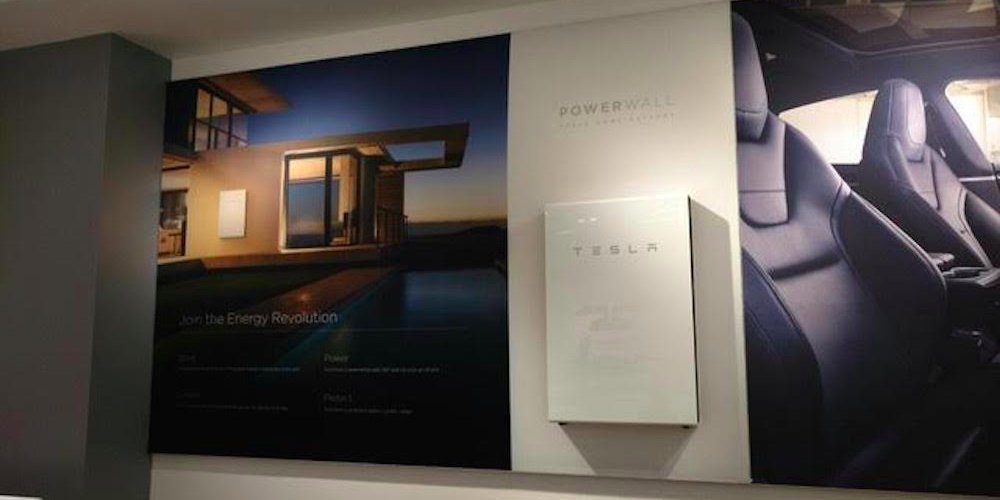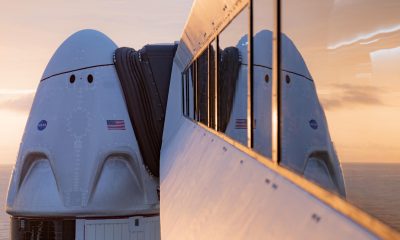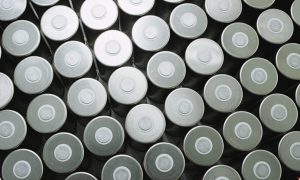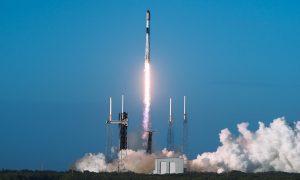Energy
Tesla partner Panasonic says 30% energy density increase in lithium-ion batteries possible
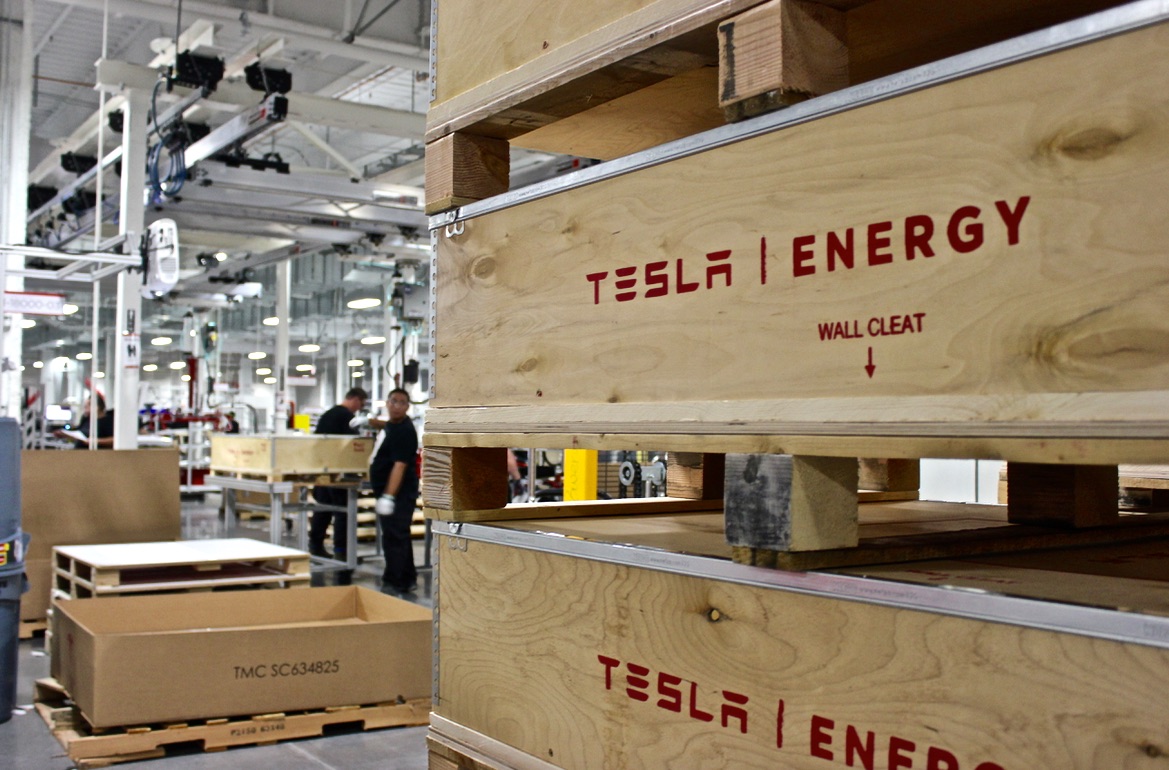
The market for lithium-ion batteries (LIBs) is expected to exceed $33 billion by 2019 and $26 billion by 2023, according to global market research firm SIS International Research. The success of Tesla and its Nevada-based Gigafactory facility has generated a lot of excitement in the LIB industry. Panasonic’s automobile battery sales are forecast to grow to $4 billion a year by March 2019, largely due to their partnership with Tesla.
“We think the existing technology can still extend the energy density of LIBs by 20% to 30%,” Panasonic’s President Kazuhiro Tsuga said. “But there is a trade-off between energy density and safety. So, if you look for even more density, you have to think about additional safety technology as well. Solid-state batteries are one [possible] answer.” These safety concerns about LIBs are also pushing Panasonic to look at alternative battery power sources.
Solid state batteries use a solid electrolyte instead of the electrolytic solution that is essential in transporting the positive lithium ions between the cathode and anode in today’s batteries. Researchers have succeeded in developing an efficient electrolytic solid material that significantly improves lithium ion conductance, raising hopes that batteries with much higher power densities are edging closer to practical applications.
“For decades now we have been pushing the limits of our Li-ion batteries in terms of energy density,” Naoaki Yabuuchi, an associate professor at Tokyo Denki University, acknowledged. “Today’s best Li-ion cells can put out about 300 watts per kilogram; a package of Li-ion cells can give off from 150 watts to 250 watts per kilogram. These levels are already close to the theoretical maximum.”
Yabuuchi is an expert on various types of rechargeable batteries. In his view, LIBs will reach the limit of their desirability as early as the first half of 2020 if their development continues to rely on existing technologies. But he has hope that new research can open up more capacity. “Existing LIBs still have room to improve their energy density because you can raise the density by introducing a nickel-based cathode material, so you can expect the batteries will still be used in the next few years.”
It’s not just Tesla and its partners like Panasonic that are interested in LIB capacity. Range anxiety continues to plague possible Tesla and other EV brand buyers, as they fear an inability to travel far enough between vehicle charges and not having access to convenient charging facilities. “We want our electric cars to go 500 km [on a single charge],” said Shinji Nakanishi, a battery researcher at Toyota, via EVannex. “And for this, we want rechargeable batteries that can generate 800 to 1,000 watt-hours per liter.”
Battery research into alternatives to LIBs is quickly evolving. The Battery Symposium in Japan, once a showcase for fuel cells and LIB cathode materials, has seen a significant shift in recent years to industry presentations on solid-state, lithium-air, and non-Li-ion batteries.
Another possible LIB alternative, lithium-air batteries, has the ability to greatly improve energy density. At this point, however, researchers are stymied because lithium-air batteries suffer from poor cycle life. But researchers haven’t given up hope. They’ve been attempting to raise the density close to theoretically expected levels, even if it occurs only for a single charge cycle.
And an entirely different alternative to the LIB doesn’t even use lithium: a cathode material for the sodium-ion battery has a discharge capacity that beats LIBs and enables the power packs to be recharged upward of 500 times. That would circumvent one of the existing weakness that now limits this technology. Two nickel-based cathode materials, lithium nickel cobalt aluminum oxide and lithium nickel manganese cobalt oxide, are sometimes mentioned in these discussions, but neither seem to have a clear potential for practical use within the next decade, according to Yabuuchi.
Tesla is leading the global shift in the automotive industry from traditional gasoline powered vehicles to more fuel-efficient, environmentally responsible modes of transport. Musk has exclaimed that the 2170 cell is “the highest energy density cell in the world and also the cheapest.” Yet, as an industry disrupter, part of Tesla’s vision has been to constantly evaluate new battery technologies. Back in 2013, Ted Merendino, a Tesla product planner, noted that “Tesla has one of the largest cell characterization laboratories in the world. We have just about every cell you can imagine on test.”
That constant inquiry behind the scenes into cell characterization at Tesla may become prudent in previously unforeseen ways. Recently, for example, with the lithium market in its most severe shortage in modern memory, Musk insisted that the amount of lithium in a LIB is about 2% of its total volume and that “lithium in a salt form is virtually everywhere… there is definitely no supply issues with lithium.” Some in the industry disagree with lithium’s resource stability, however, so that alternative battery research may end up offering good karma.
In 2016, sales of LIBs for electric vehicles increased by some 66%, up from 12.3 GWh of capacity to 20.4 GWh. LIBs are the go-to source for EV power right now. Many other products use LIBs: chainsaws, mini-cameras, solar window chargers, wheelchairs, bicycles, portable self-charging desks.
But, with safety issues surrounding LIBs, the limitations of their charge capacity, and lithium market limitations, will Tesla invest in R&D toward alternative battery development so it sooner-than-later adds battery alternatives to its catalog?
Of course, advances from R&D take years to make their way to the marketplace, but should one or more of these promising technologies be translated for commercial means, then we may see innovative improvements in batteries, which could also enhance the performance and cost of our beloved Teslas.
Source: Nikkei Asian Review via EVannex
Energy
Tesla Lathrop Megafactory celebrates massive Megapack battery milestone
The Tesla Megapack is the backbone of Tesla Energy’s battery deployments.
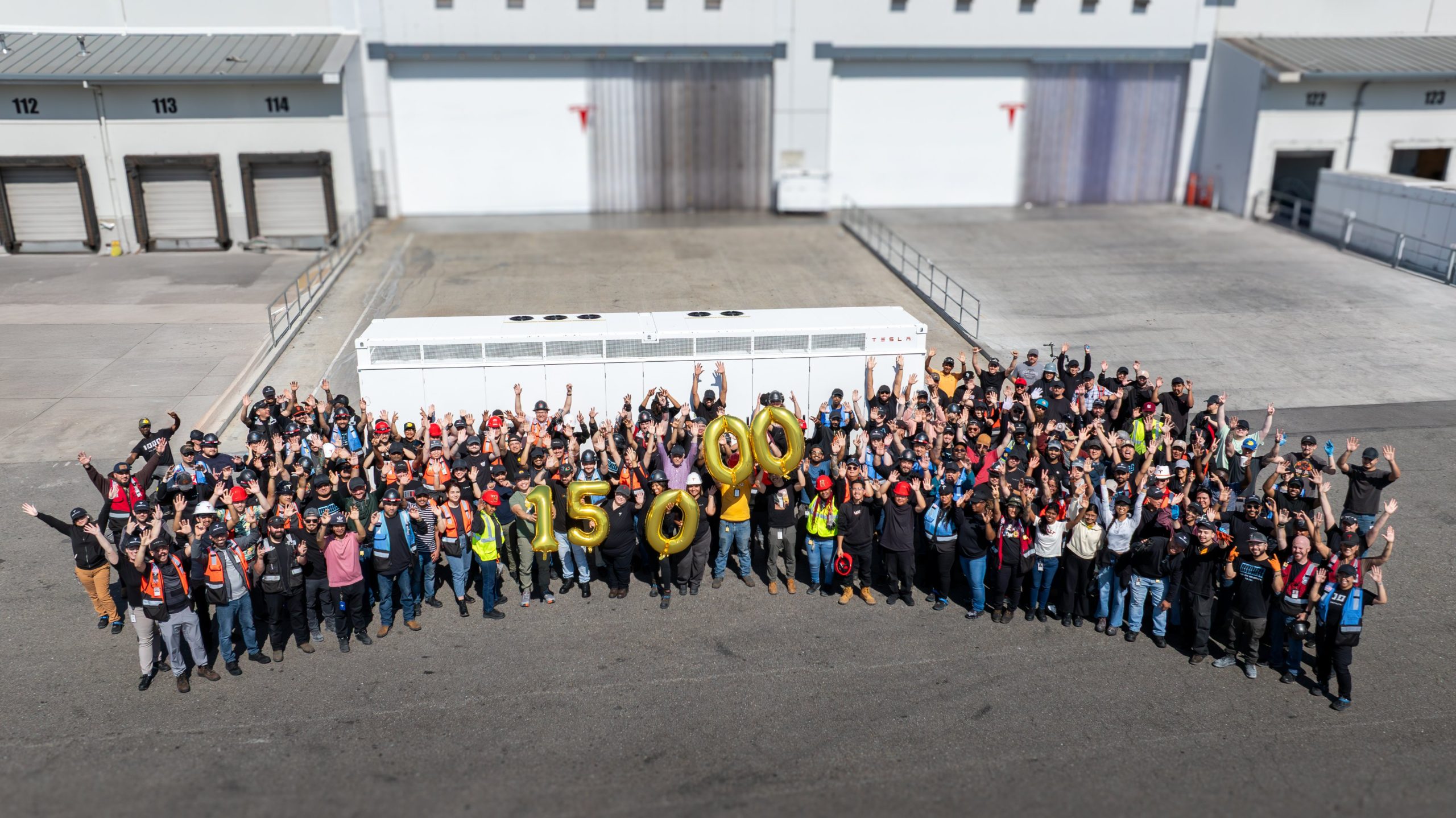
The Tesla Lathrop Megafactory recently achieved a new milestone. As per the official Tesla Megapack account on X, the Lathrop Megafactory has produced its 15,000th Megapack 2 XL battery.
15,000 Megapack Batteries
Tesla celebrated the milestone with a photo of the Lathrop Megafactory team posing with a freshly produced Megapack battery. To commemorate the event, the team held balloons that spelled out “15,000” as they posed for the photo.
The Tesla Megapack is the backbone of Tesla Energy’s battery deployments. Designed for grid-scale applications, each Megapack offers 3.9 MWh of energy and 1.9 MW of power. The battery is extremely scalable, making it perfect for massive energy storage projects.
More Megafactories
The Lathrop Megafactory is Tesla’s first dedicated facility for its flagship battery storage system. It currently stands as the largest utility-scale battery factory in North America. The facility is capable of producing 10,000 Megapack batteries every year, equal to 40 GWh of clean energy storage.
Thanks to the success of the Megapack, Tesla has expanded its energy business by building and launching the Shanghai Megafactory, which is also expected to produce 40 GWh of energy storage per year. The ramp of the Shanghai Megafactory is quite impressive, with Tesla noting in its Q1 2025 Update Letter that the Shanghai Megafactory managed to produce over 100 Megapack batteries in the first quarter alone.
Tesla Energy’s Potential
During the first quarter earnings call, CEO Elon Musk stated that the Megapack is extremely valuable to the energy industry.
“The Megapack enables utility companies to output far more total energy than would otherwise be the case… This is a massive unlock on total energy output of any given grid over the course of a year. And utility companies are beginning to realize this and are buying in our Megapacks at scale,” Musk said.
Energy
Tesla Megapacks powers the xAI Colossus supercomputer
Tesla Megapacks step in to stabilize xAI’s Colossus supercomputer, replacing natural gas turbines. Musk’s ventures keep intertwining.
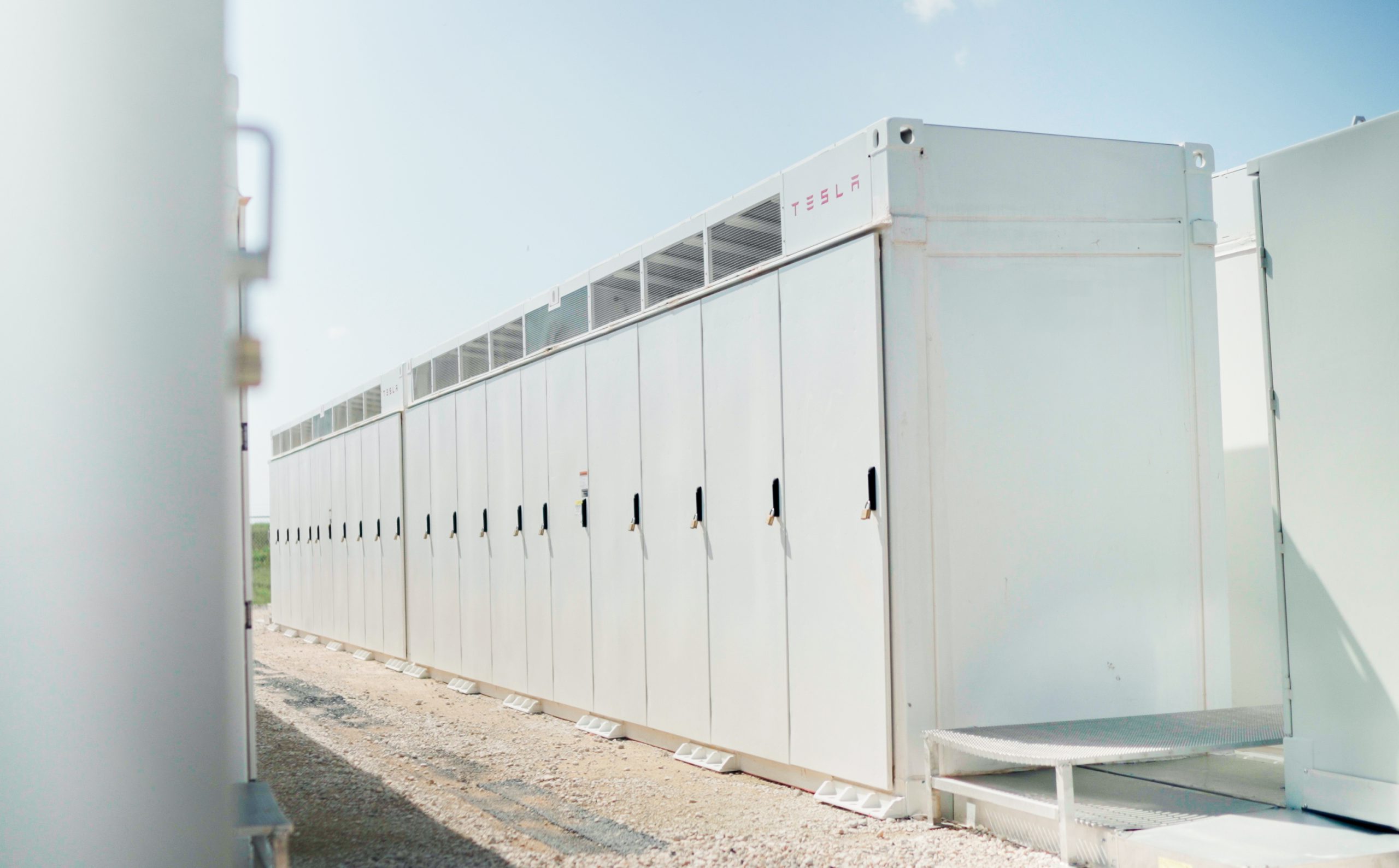
Tesla Megapack batteries will power the xAI Colossus supercomputer in Memphis to ensure power stability. The collaboration between Tesla and xAI highlights the synergy among Elon Musk’s ventures.
The artificial intelligence startup has integrated Tesla Megapacks to manage outages and demand surges, bolstering the facility’s reliability. The Greater Memphis Chamber announced that Colossus, recently connected to a new 150-megawatt electric substation, is completing its first construction phase. This transition addresses criticism from environmental justice groups over the initial use of natural gas turbines.
“The temporary natural gas turbines that were being used to power the Phase I GPUs prior to grid connection are now being demobilized and will be removed from the site over the next two months.
“About half of the operating turbines will remain operating to power Phase II GPUs of xAI until a second substation (#22) already in construction is completed and connected to the electric grid, which is planned for the Fall of 2025, at which time the remaining turbines will be relegated to a backup power role,” the Chamber stated.
xAI’s rapid development of Colossus reflects its ambition to advance AI capabilities, but the project has faced scrutiny for environmental impacts. The shift to Megapacks and grid power aims to mitigate these concerns while ensuring operational continuity.
The Megapack deployment underscores the collaboration among Musk’s companies, including Tesla, SpaceX, Neuralink, and The Boring Company. Tesla appears to be the common link between all of Musk’s companies. For example, The Boring Company built a tunnel in Giga, Texas. In addition, Musk has hinted at a potential collaboration between the Tesla Optimus Bot and Neuralink. And from January 2024 to February 2025, xAI invested $230 million in Megapacks, per a Tesla filing.
Tesla Energy reported a 156% year-over-year increase in Q1 2025, deploying 10.4 GWh of storage products, including Megapacks and Powerwalls. Tesla’s plans for a new Megapack factory in Waller County, Texas, which is expected to create 1,500 jobs in the area, further signal its commitment to scaling energy solutions.
As xAI leverages Tesla’s Megapacks to power Colossus, the integration showcases Musk’s interconnected business ecosystem. The supercomputer’s enhanced stability positions xAI to drive AI innovation, while Tesla’s energy solutions gain prominence, setting the stage for broader technological and economic impacts.
Energy
Tesla Energy celebrates one decade of sustainability
Tesla Energy has gone far since its early days, and it is now becoming a progressively bigger part of the company.
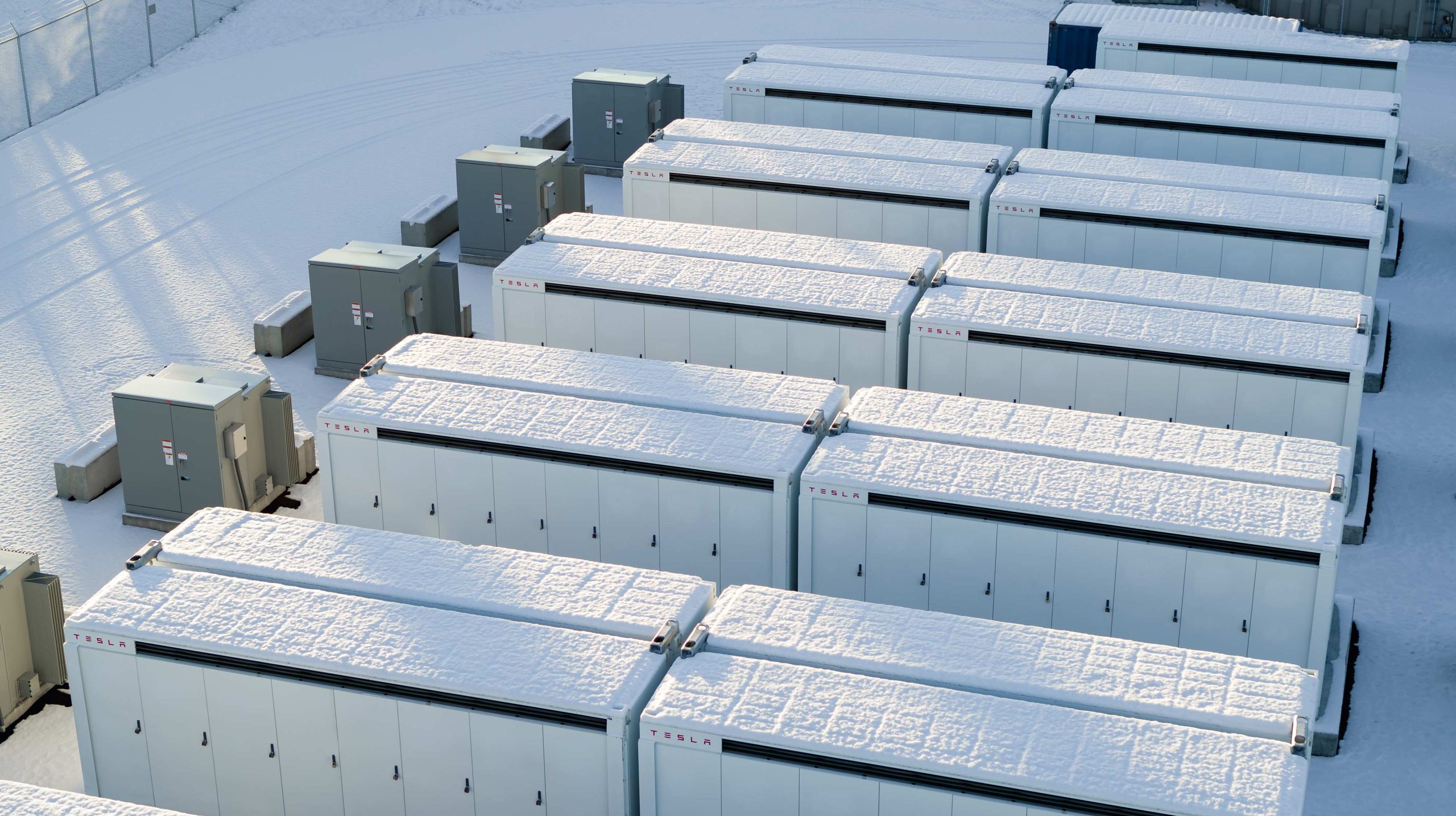
Tesla Energy recently celebrated its 10th anniversary with a dedicated video showcasing several of its milestones over the past decade.
Tesla Energy has gone far since its early days, and it is now becoming a progressively bigger part of the company.
Tesla Energy Early Days
When Elon Musk launched Tesla Energy in 2015, he noted that the business is a fundamental transformation of how the world works. To start, Tesla Energy offered the Powerwall, a 7 kWh/10 kWh home battery system, and the Powerpack, a grid-capable 100 kWh battery block that is designed for scalability. A few days after the products’ launch, Musk noted that Tesla had received 38,000 reservations for the Powerwall and 2,500 reservations for the Powerpack.
Tesla Energy’s beginnings would herald its quiet growth, with the company later announcing products like the Solar Roof tile, which is yet to be ramped, and the successor to the Powerwall, the 13.5 kWh Powerwall 2. In recent years, Tesla Energy also launched its Powerwall 3 home battery and the massive Megapack, a 3.9 MWh monster of a battery unit that has become the backbone for energy storage systems across the globe.
Key Milestones
As noted by Tesla Energy in its recent video, it has now established facilities that allow the company to manufacture 20,000 units of the Megapack every year, which should help grow the 23 GWh worth of Megapacks that have already been deployed globally.
The Powerwall remains a desirable home battery as well, with more than 850,000 units installed worldwide. These translate to 12 GWh of residential entry storage delivered to date. Just like the Megapack, Tesla is also ramping its production of the Powerwall, allowing the division to grow even more.
Tesla Energy’s Role
While Tesla Energy does not catch as much headlines as the company’s electric vehicle businesses, its contributions to the company’s bottom line have been growing. In the first quarter of 2025 alone, Tesla Energy deployed 10.4 GWh of energy storage products. Powerwall deployments also crossed 1 GWh in one quarter for the first time. As per Tesla in its Q1 2025 Update Letter, the gross margin for the Energy division has improved sequentially as well.
-

 Elon Musk3 days ago
Elon Musk3 days agoTesla investors will be shocked by Jim Cramer’s latest assessment
-

 News1 week ago
News1 week agoTesla Robotaxi’s biggest challenge seems to be this one thing
-

 News2 weeks ago
News2 weeks agoTexas lawmakers urge Tesla to delay Austin robotaxi launch to September
-

 Elon Musk2 weeks ago
Elon Musk2 weeks agoFirst Look at Tesla’s Robotaxi App: features, design, and more
-

 Elon Musk2 weeks ago
Elon Musk2 weeks agoxAI’s Grok 3 partners with Oracle Cloud for corporate AI innovation
-

 News2 weeks ago
News2 weeks agoSpaceX and Elon Musk share insights on Starship Ship 36’s RUD
-

 News2 weeks ago
News2 weeks agoWatch Tesla’s first driverless public Robotaxi rides in Texas
-

 News2 weeks ago
News2 weeks agoTesla has started rolling out initial round of Robotaxi invites

